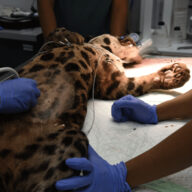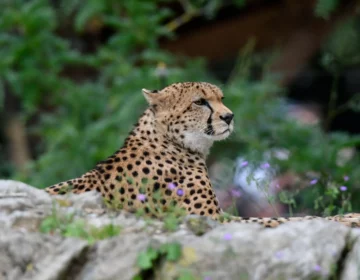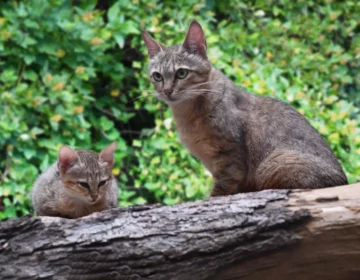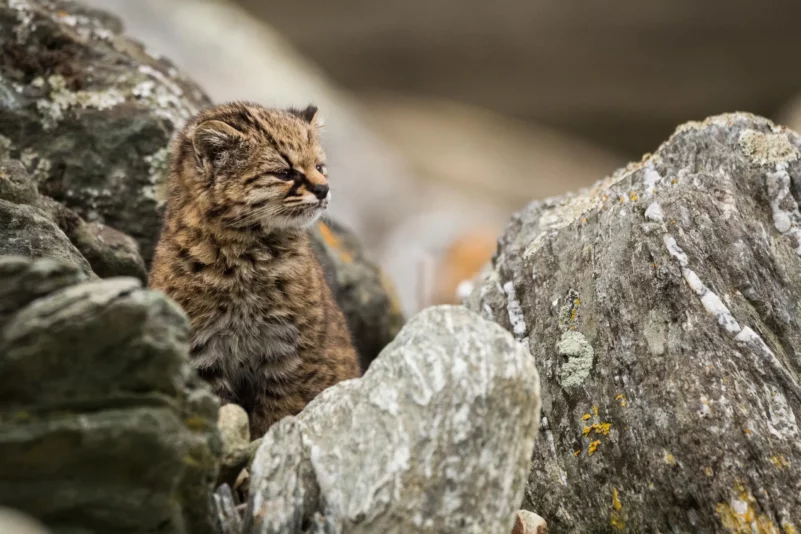
Chilean Ocelot
Leopardus guigna
Chilean Ocelot
INTERESTING FACT
The Chilean Ocelot is the smallest cat in the Americas and one of the smallest in the world.
APPEARANCE
Chilean ocelot’s fur is downy, grey-brown, or red-brown with many small black spots, and the abdomen is lighter and also spotted. The muzzle of this cat has a distinctive pattern: a dark line runs from each eye across the cheek, and another dark stripe rises vertically on either side of the black nose. His ears are relatively small, rounded, and have a black back side with a white central spot. Some individuals have distinct dark stripes across the throat. The tail of the Chilean ocelot is decorated with black rings and is about half the length of the body. Males are larger than females. Melanism is quite common in some regions.
DISTRIBUTION AND HABITAT
Central and southern Chile, including the island of Chiloe, and marginally in adjacent areas of southwestern Argentina from sea level to 2500 m above sea level.
Vegetation cover is an important requirement for the Chilean ocelot, as it is usually found in forest types with strong undergrowth. It is strongly associated with the humid temperate mixed forests of the southern Andes and coast, particularly the Valdivian and Araucania forests of Chile. Characteristic of these forests is the presence of southern beech and bamboo in the undergrowth.
BEHAVIOUR
Can be active during the day and at night. Melanistic individuals show more nocturnal activity than normal individuals. The Chilean Ocelot is a good climber, escaping to trees when it feels threatened. This is also their resting place.
FOOD
It feeds mainly on small mammals – rodents, marsupials, and lagomorphs, but also birds, lizards, and invertebrates. Occasionally eats carrion.
MAIN THREATS
Habitat loss and fragmentation are caused mainly by logging, agricultural and livestock activities, and conversion of habitats to pine plantations, as well as direct attacks from humans.
